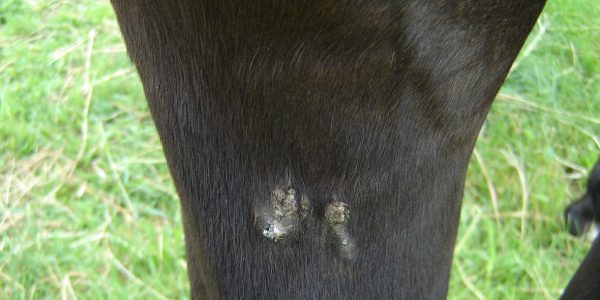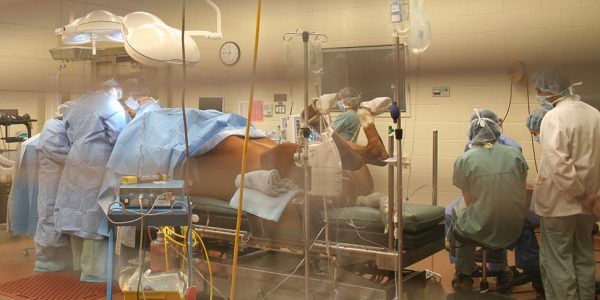CUTANEOUS MASSES
Sarcoid tumours, squamous cell carcinomas and melanomas are the most frequently encountered cutaneous masses in the horse. Other types exist, but are less common.
Each case is evaluated individually and appropriate treatment must always take into consideration the cancers localisation on the horse as well as its type, prognosis and cost. Generally, a combination of 2 methods is used to decrease the risk of recurrence.
UROGENITAL MASSES
Internal and external masses can affect the horse’s urogenital system. External masses affecting the penis, the sheath et the vulva are generally sarcoid tumors or squamous cell carcinomas treated in the same manner as cutaneous masses.
The most common internal masses are ovarian tumors. Although usually benign, these masses can cause pain and behavioral problems. They are usually removed by laparoscopy while the horse is standing and under local anesthesia.
SINUS MASSES
Sinus masses are also treated by the surgery Service. A biopsy is taken to determine the type of mass and to give a prognosis. Occasionally, advanced imagery such as computed tomography (CT Scan) is necessary to allow proper assessment of the mass and determine adequate therapy. If prognosis is good, surgery, generally performed in the standing position, will be used to remove the mass.
OTHER
The internal medicine Service evaluates internal neoplasia such as digestive masses or masses with multi-systemic involvement. Lymphoma is one of the most frequent tumors of the digestive system in the horse.


